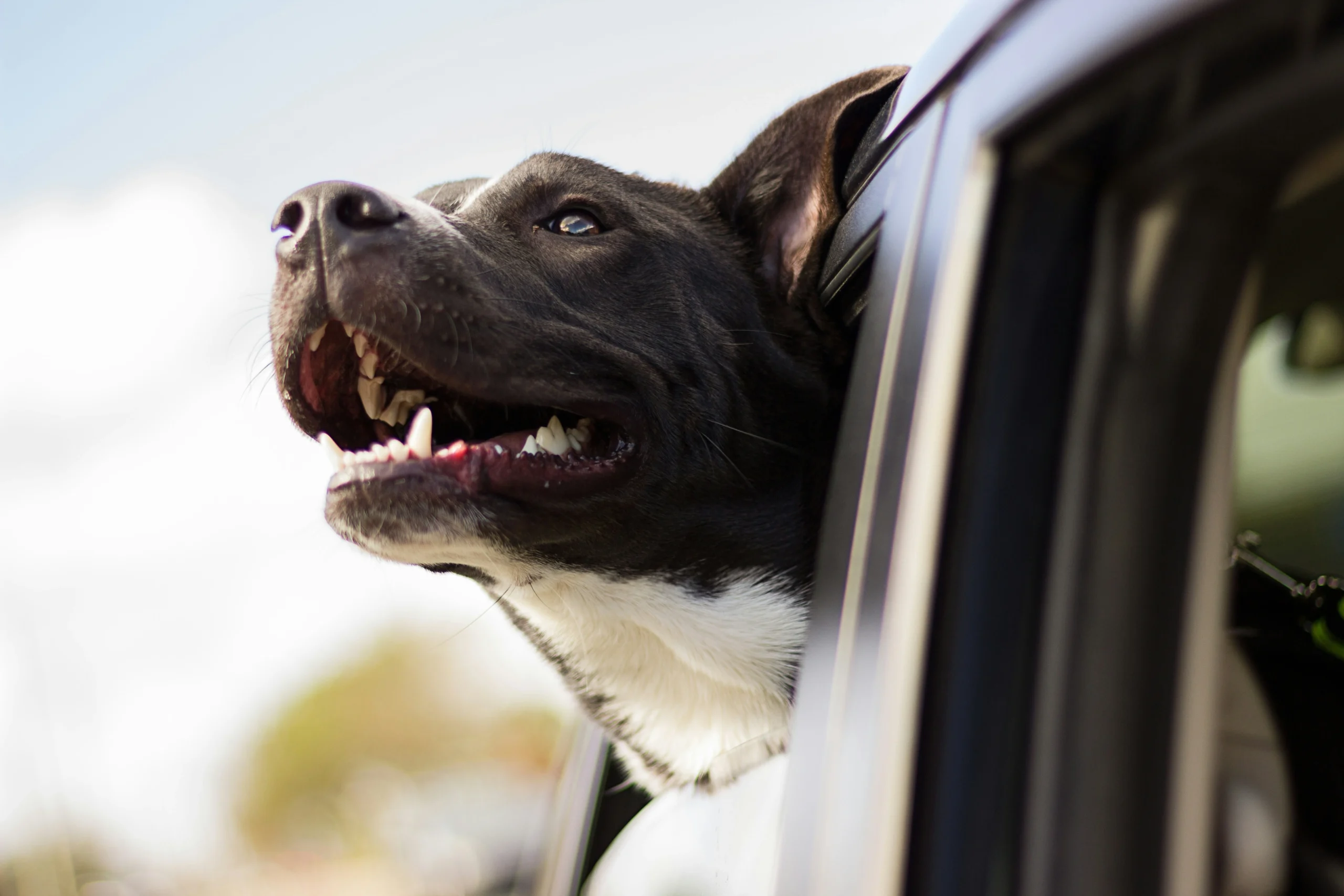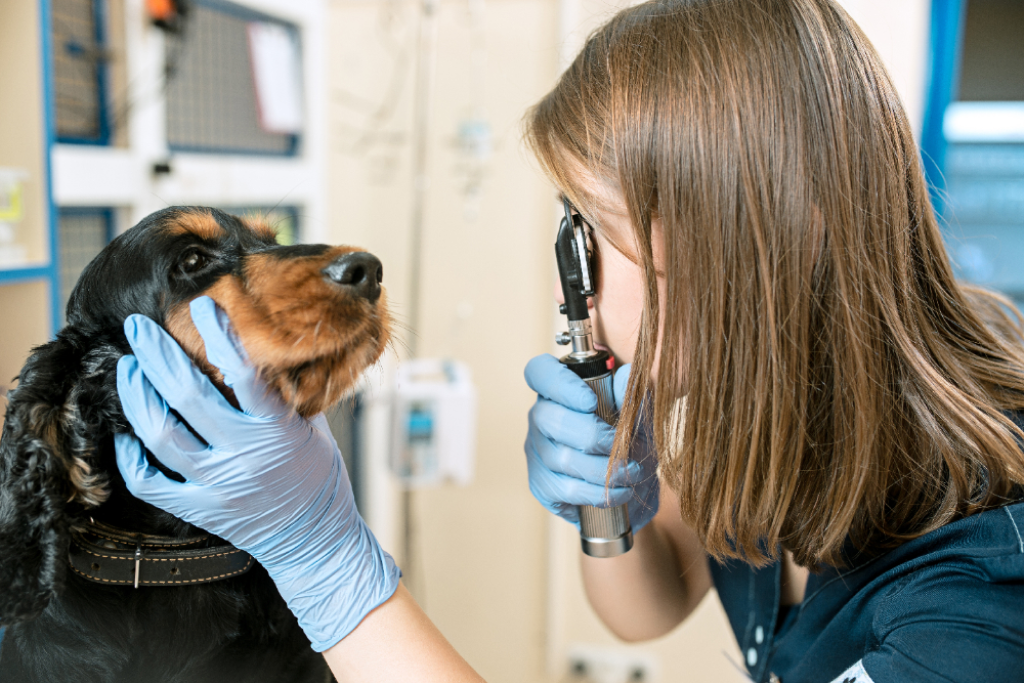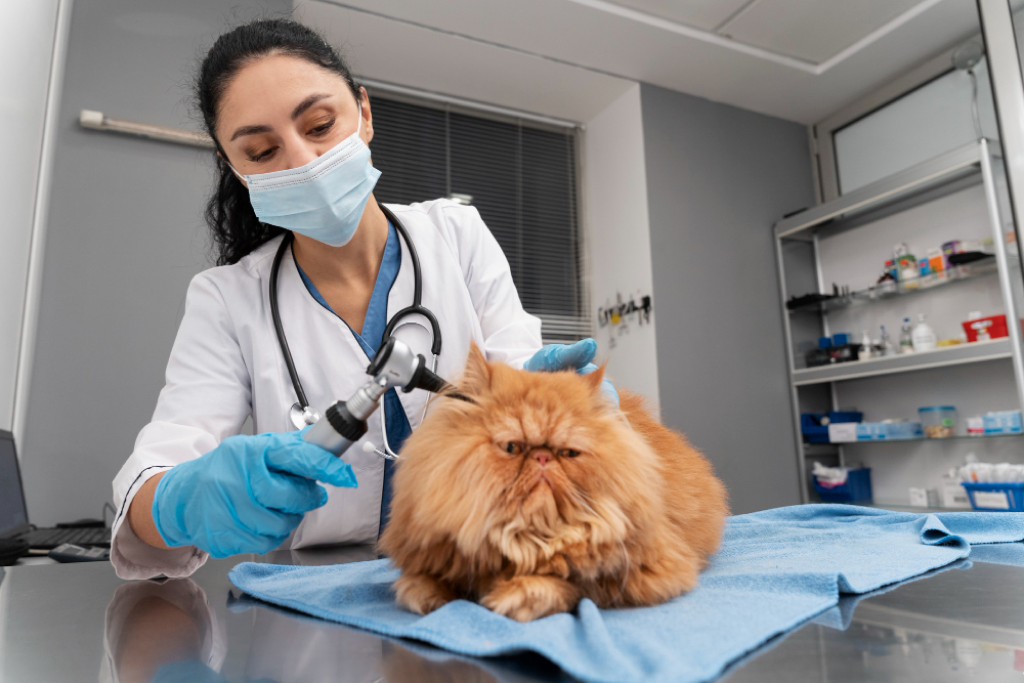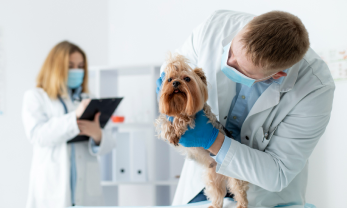We analyse the potential causes in our latest blog
If you notice that your dog’s eye is weeping then it could be caused by a medical condition affecting their eyes. A weeping eye can take many forms, sometimes it may appear as a clear discharge, whilst other times it may be coloured or gloopy.
Knutsford Vets Surgery have vets with additional training in ophthalmology so if you have a concern book an online appointment today if your dog has an eye issue.
We take a look at why your dog’s eye could be weeping in our latest blog.
Contents
- What is weeping eye?
- What could discharge mean about my dog’s eyes?
- How to diagnose the cause of a weeping eye
- When should I see my vet for a weeping eye?
- How will a weeping eye be treated?
- About conjunctivitis caused by allergies
Ophthalmology From Knutsford Vets
Knutsford Vets have staff with additional training in pet eye health. Find out more about our ophthalmology service.
What is a weeping eye?
It’s normal for dogs to create tears, just like it is for humans. These tears act as a natural lubricant for the eye and ensure that no debris collects on the surface of the eye. From time to time, however, you may notice that your dog’s eyes aren’t just creating tears, but that they’re also creating an abnormal discharge. This discharge may appear in a number of ways and is often referred to as a weeping eye.
Owners should be especially concerned if their dog’s eyes produce a discoloured discharge, begin watering with clear discharge much more than usual or if their dog’s eyes are coated in a mucus-like substance. Owners should also look out for other symptoms of eye discomfort, such as redness of the eyes or if your dog is physically pawing the eye.
Knutsford Vets Surgery have staff with additional training in Ophthalmology
What could discharge mean about my dog’s eyes?
When it comes to a weeping eye, the type of discharge that is weeping from your dog’s eye can say a lot about their ailment. Discharge may present in a number of ways, which tells the vet a lot about the condition. It’s also worth pointing out that sometimes infection or illness can progress causing the discharge to change colour or form. We take a look at some kinds of discharge that you might notice and what they may mean for your pet.
Crust or gloop around the eyes
Just like in humans, tears play a vital role in maintaining your pet’s eye health. They help provide oxygen to the cornea and remove debris. Usually, tears will drain from the tear ducts located in the inner corner of each eye, but sometimes crust or gloop may accumulate there. This is completely normal and very similar to ‘sleepy dust’ noticed in humans. It’s basically dried tears with some dust, oils and other dead cells.
Some breeds may be affected by this more than others, but you’ll be pleased to know it’s completely normal. The dust can usually be removed with a warm damp cloth and cause little discomfort to your animal. If you notice that the goop or crust is a little more than usual or occurring more frequently, it may be worth asking your vet about it. It’s also worth investigating further if you notice other symptoms such as redness or any sign of discomfort such as rubbing.
Clear and watery discharge
If your dog’s eye is weeping with a clear and watery discharge that appears clear, as though they are producing too much tear, there are a range of potential causes – some are serious and others aren’t. This symptom is referred to as epiphora and potential causes include: –
- Allergies or irritants
- Debris or other substances in the eye
- Abnormalities with the eye, including prominent eyes, rolled in eyelids or additional hairs that are contacting the cornea
- Blocked tear ducts
- Corneal wounds or other injuries
- Glaucoma
If it’s only mild, an increase in the amount that your dog’s eyes are watering isn’t always a cause for concern if there are no other obvious signs of discomfort. In these instances, monitor the situation for any changes.
However, if the epiphora continues or worsens you should seek veterinary help. You should also seek help if any other signs of discomfort accompany your dog’s weeping eye such as redness, pawing at the eye or squinting.
One of the common causes of epiphora is allergies, which affect dog’s in much the same way that they will affect humans. Their eyes will begin to water more than usual, they may try itching the eye with their paw and you will also notice their eyes appear redder than usual as a result of inflammation. Allergies are usually seasonal (depending on the cause) so it’s worth keeping an eye out for the symptoms as they approach their months of irritation
Red tear stains around the eyes
If your dog has lighter coloured fur, you may notice discolouration around their eyes. With prolonged exposure to air, oxidation of the tears turns them reddish brown. Although it may look unsightly, this is generally a cosmetic issue and doesn’t reflect on the health of your pet’s eyes.
Unfortunately, the stains may remain on your dog’s fur until they grow out which can be a pain for many owners. You can keep on top of this by ensuring the fur around their eyes is kept trimmed. It’s also worth wiping the area around the eyes with a damp cloth. There are a number of antibiotic-free supplements that can be added to the diet to reduce tear staining.
White and grey mucous
White and grey mucus that forms on the eye is usually as a result of a medical condition known as “dry eye” or keratoconjunctivitis sicca (KCS). This occurs when your pet’s immune system attacks the glands that produce the watery portion of the tear film. They continue to make the mucous portion of the tear film leading to mucoid strings on the surface of the eye. This can cause discomfort. Over time your pet may develop ulcers and other abnormalities.
If you notice this kind of discharge in your pet’s eye then it’s worth booking an appointment at your local vet as soon as possible. Here at Knutsford Vets, we’ll usually carry out a Schirmer Tear Test to differentiate between KCS and other potential diseases causing mucous. The good news is that KCS can be treated with a number of different medicines to help get your pet back to full health.
Yellow or green discharge from the eye
If you notice your dog creating discoloured discharge that is weeping from their eye, it may be caused by an eye infection. Yellow or green discharge is enough reason to visit the vets alone, but you may also notice it is accompanied by redness to the eyes. An eye infection may be the primary problem or it could develop as a secondary issue from an eye injury or other illness.
If your dog’s eyes are injured or they’re in a close scrape with another animal you should keep checking for any discharge which may indicate an infection. Eye infections that cause coloured discharge to weep from the eye are usually easily treatable with antibiotics, but it will become harder to treat the longer that it’s left.
How to diagnose the cause of a weeping eye
To diagnose the cause of your dog’s weeping eye your vet will usually carry out an initial inspection of the eye. This will include a visual examination of any discharge and an assessment of the overall eye health in general. The vet will usually look at whether your dog’s eyes are red and examine for any obvious clues pointing to a particular illness.
Alongside the eye investigation, they will also ask general questions about your pet’s overall health and behaviour as a weeping eye may be caused by a general health issue as opposed to an issue with the eye itself.
Once this initial assessment is carried out, a diagnosis will be made and discussed with you. In this case, they will prescribe treatment and clean the eye, giving you advice to help you clean and treat the eye at home. They will then ask you to report back to the vet in a certain number of days.
If your vet is unsure of the cause or believes the condition may be more complicated than a simple eye infection, further testing may be carried out. A range of the tests that can be carried out by a vet in relation to a weeping eye include: –
- Schirmer Tear Test – This is where a small strip of paper is positioned in the lower eyelid. It helps the vet identify if your dog is creating enough tears to lubricate the eye properly.
- Menace test or basic vision test – This is where a vet tests your pet’s reaction to an object moving close to the eyes.
- Pupillary Light Test – This is where a vet will shine a light in your pet’s eye to identify if your dog’s pupils constrict at the light.
- Eye Pressure Test – For this procedure the vet will anaesthetise the eye with drops before testing the pressure. High pressure is a sign of glaucoma and low pressure may be caused by uveitis.
In addition, more general medical tests may be carried out, such as blood or urine tests to rule our more general medical conditions.
When should I see my vet for a weeping eye?
As always it’s best to use your common sense for visiting the vet. If the symptoms are relatively mild and have only lasted a few hours to a day without getting worse then it’s worth waiting. If symptoms are clearly disturbing your pet, such as if they are pawing at their eyes or have redness to them, book an appointment immediately. Many eye issues only get better following treatment.
Coloured discharge is also a cause for concern, particularly if you’ve never noticed your animal with this kind of discharge before. This will usually indicate a condition or infection has progressed past the initial phase of treatment. If your pet’s symptoms are only minor but continue for a period of days it’s also worth visiting the vet before things start to get worse.
How will a weeping eye be treated?
The treatment for a weeping eye will always depend on the cause of the illness. Once a vet has fully examined the eye and made a diagnosis they will hopefully be able to prescribe medication to treat the infection.
For a simple eye infection, antibiotics and regular cleaning of the eye will be prescribed. Hopefully, the eye will make a full recovery very quickly and no further treatment will be required.
Other more serious eye conditions may require continued management with eye drops or other medications. This includes keratoconjunctivitis sicca (KCS) that may be the cause of any white or grey mucous on the eyes. In the instance of KCS it may take a number of different treatments before an effective medication is found. Glaucoma, which may cause excessive watery weeping of the eye, also requires lifelong management and is not curable.
In some instances, the best form of treatment may be surgery depending on the illness and it’s response to medication. KCS may require surgery to be performed in which new tear ducts are created using saliva glands from the mouth. These kinds of treatment are only ever reserved for the most serious cases, where other medications have failed to work.
About conjunctivitis caused by allergies
As discussed earlier in the blog, one of the potential causes of a weeping eye is conjunctivitis brought on by allergies. This will usually lead to an increase in tears, accompanied by redness to the eye and discomfort noticed by pawing. There are also other symptoms which you may notice, including: –
- Sneezing
- Runny or stuffy nose
- Coughing, wheezing or general difficulty breathing
- Skin rash or hives
- Itchiness
If you are a new dog owner and have noticed that your pet may be suffering from allergies for the first time, you should pay a visit to the vet. Diagnosing allergies can often be difficult, depending on the potential cause, but it can dramatically improve your pet’s quality of life.
Some potential causes of the allergies that may be causing your dog’s eye to weep include: –
- Mold spores
- Dust mites
- Pollen (hay fever)
- Allergies to other pets or animals
You can find out more information on allergies on our Dermatology page.
Knutsford Veterinary Surgery have vets who have undertaken additional training in Ophthlamology. Visit our ophthalmology page to find out more and book your appointment today.








